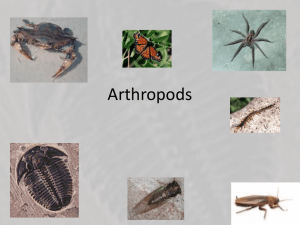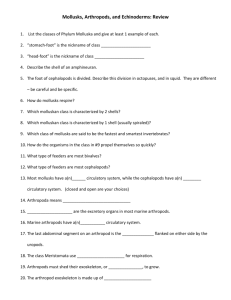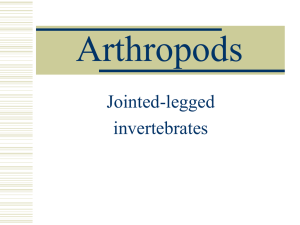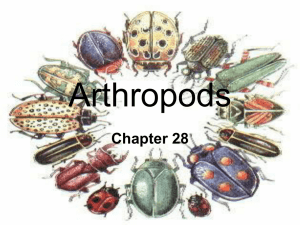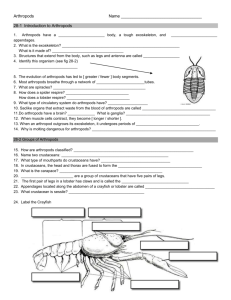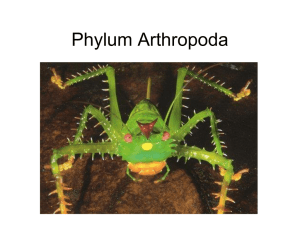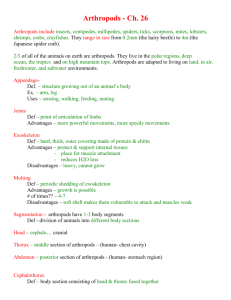phylum_arthropoda
advertisement
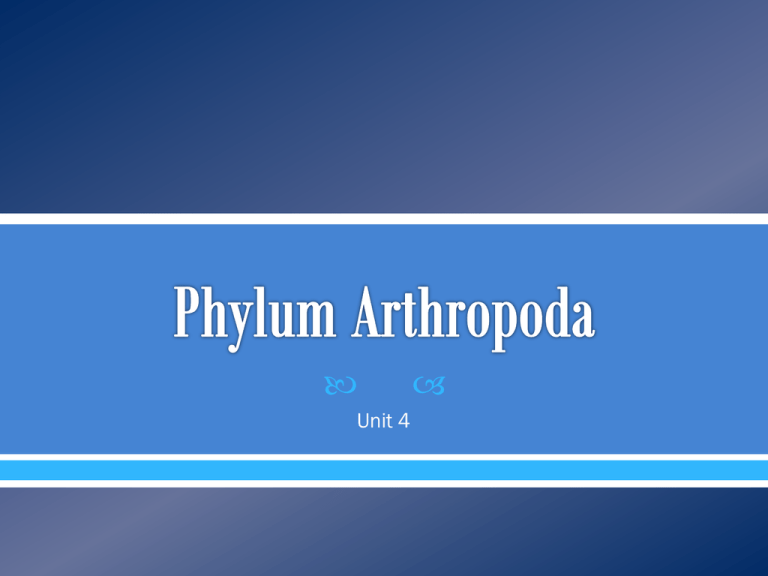
Unit 4 Arthropods have a segmented body, a tough exoskeleton and jointed appendages. Exoskeleton: made from protein and chitin; great variation - firm, leathery (caterpillars) to extremely tough, hard (crabs, lobsters) Appendages: structures such as legs and antennae that extend from the body wall Include herbivores, carnivores and omnivores. Mouthparts (pincers, fangs, jaws) have evolved in ways to enable different species to eat almost any food. Most terrestrial arthropods breathe through a network of branching trachael tubes. Air enters and leaves the tubes through small openings. Some have book lungs: organs that have stacked layers of respiratory tissue. open circulatory system well-developed heart pumps blood through arteries that branch and enter tissues blood moves into cavities, then collects in large sinus surrounding the heart and re-enters to be pumped through the body Most dispose of nitrogenous wastes using Malpighian tubules: Malpighian tubules: saclike organs that take out wastes from the blood and add them to digestive wastes (feces) that move through the gut Aquatic arthropods, cellular wastes diffuse to the water. Exoskeleton does not grow as the animal grows. When they outgrow their exoskeletons, arthropods undergo periods of molting. Molting: entire exoskeleton is shed and a larger one is made by skin glands to take its place. Most arthropods have a well developed nervous system. All arthropods have a brain. Terrestrial arthropods undergo internal fertilization. Aquatic arthropods may have internal or external fertilization. There are 3 different groups of arthropods: o Crustaceans: two pairs of antennae, two or three body segments and chewing mouthparts called mandibles. o Spiders: Two body sections, four pairs of walking legs and mouthparts called chelicerae o Insects: one pair of antennae, unbranched appendages, and jaws. Pg 719: #1,3 Pg 741: # 1,2,3,4,5,

